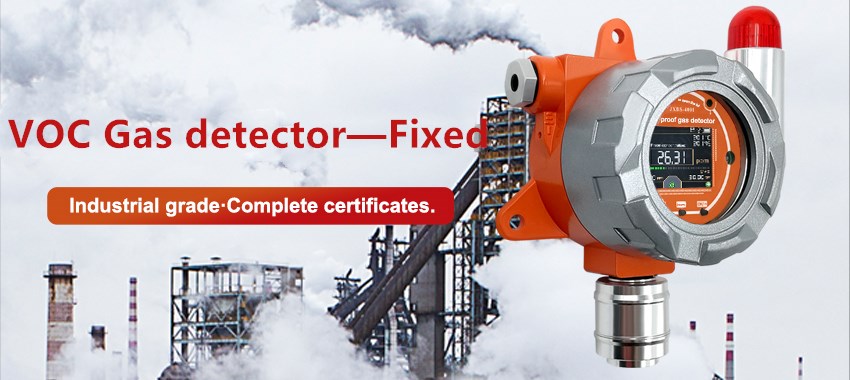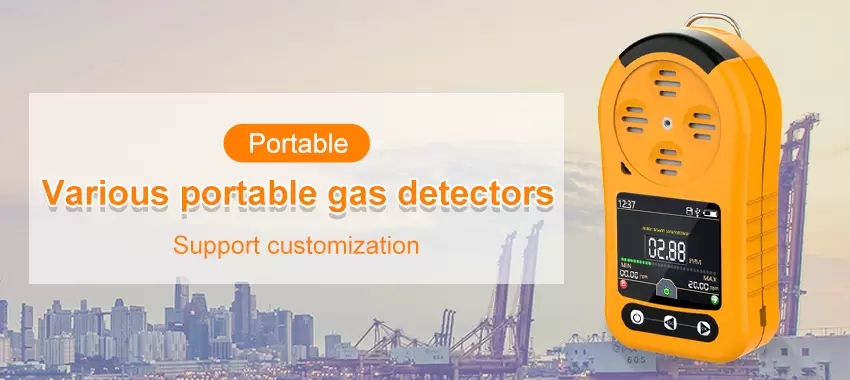Background:
The public is not necessarily familiar with the concept of sensors. But infrared thermometers for routine quarantine, breathalyzers to check for drunk driving and home gas leak alarms are common electronic measurement tools. It plays an important role in People’s Daily life. The core device is the sensor. A sensor is a device or devices that senses a specified measurement. And according to certain rules to convert it into usable output signals. It usually consists of a sensitive element and a transformation element.

Sensor is an important information acquisition device:
There are many kinds of gas sensors according to the measurement object, measurement principle and sensitive material of the sensor. Specifically, the measurement object of the gas sensor is oxygen, flammable and explosive gases (hydrogen, methane, acetylene, etc.), toxic and harmful gases (carbon monoxide, ammonia, nitrogen dioxide, etc.) and organic volatiles (alcohol, acetone, etc.).
According to the measurement principle, common gas sensors are resistance type, catalytic combustion type, electrochemical type, optical type, thermal conductivity and so on. Common gas sensor sensitive materials include metal oxide semiconductor, conductive polymer, catalyst materials, solid electrolyte and hybrid materials.

Sensors:
MOS sensors have a broad spectrum and are responsive to all but a few gases, but their stability and selectivity need to be improved. Catalytic combustion sensor is mainly used for hydrogen, methane and other combustible gas detection, detection concentration is relatively high.
There are many kinds of gas sensors according to the measurement object, measurement principle and sensitive material of the sensor. Specifically, the measurement object of the gas sensor is oxygen, flammable and explosive gases (hydrogen, methane, acetylene, etc.), toxic and harmful gases (carbon monoxide, ammonia, nitrogen dioxide, etc.) and organic volatiles (alcohol, acetone, etc.).
According to the measurement principle, common gas sensors are resistance type, catalytic combustion type, electrochemical type, optical type, thermal conductivity and so on. Common gas sensor sensitive materials include metal oxide semiconductor, conductive polymer, catalyst materials, solid electrolyte and hybrid materials.
MOS sensors have a broad spectrum and are responsive to all but a few gases, but their stability and selectivity need to be improved. Catalytic combustion sensor is mainly used for hydrogen, methane and other combustible gas detection, detection concentration is relatively high.
Solid electrolyte sensor is mainly used to measure oxygen, nitrogen oxide, etc. It is mainly used for automobile exhaust emission monitoring. The optical sensor only responds to the gas absorption characteristic light and has a wide measurement range. But susceptible to humidity and dust. Thermal gas sensors can only be used for quantitative detection. That is, the detection of gas content in an environment of known composition.
Iot sensors:
Sensor is an important information acquisition device, and information transmission technology (communication technology and information processing technology), computer technology and information technology are three main components of information technology. With the rise of the Internet of Things, the role of sensors is increasingly valued.
The Internet of Things connects objects, people, systems and information resources through sensing devices and by convention. Intelligent service systems that process and respond to information in the physical and virtual worlds. The sensing devices are mainly sensors. Cost appropriate, accurate and efficient information acquisition is the first problem to be solved in information system. This requires the performance of the sensor to be further improved, and the corresponding signal interface. Because the output of the general gas sensor is analog. To pass the corresponding analog-to-digital conversion and conform to a certain interface protocol. To be compatible with the Internet of things.
It is generally necessary to add an ANALOG-to-digital module or to integrate the gas sensor, conditioning circuit, and analog-to-digital conversion circuit into a monolithic system. This involves the compatibility of micro-nano processing technology of different materials. In addition, for intelligent mobile terminals, the power consumption and size of gas sensors should not be too large. And the cost is acceptable to consumers.
Miniaturization, new materials and intelligence become important directions:
The core index of gas sensor is 3S and 2R. Sensitivity, selectivity and stability, as well as response and recovery.Higher sensitivity means lower detection limits. It can reduce the concentration range of warning and improve safety. High selectivity can avoid or reduce the interference of non-target gas and reduce the false alarm rate. The response and recovery characteristics determine the detection speed of the sensor. At present, the biggest problem in the application of gas sensor is that the stability can not meet the needs. This is because the detection process of gas sensors generally involves chemical reactions, chemical reactions and environmental atmosphere will cause chronic effects on the surface and microstructure of materials. The stability and life of sensor can not meet the actual demand.
Gas is developing miniaturization:
Using silicon – based micro-machining technology or multilayer ceramic co-sintering technology. Using thick film hybrid electronic technology, the sensor is miniaturized. Achieve mass manufacturing, improve consistency and interchangeability. The volume and power consumption are significantly reduced. Can be applied to low energy consumption and small size have high requirements of the field.
Application of new materials:
The key of volume sensor is gas sensitive material. Sensitive materials determine the performance of sensors. Especially selectivity and stability. Applications of nanomaterials, graded materials, hybrid materials, new carbon materials (carbon nanotubes, graphene and graphenes, etc.) and new two-dimensional materials, metal-organic framework compounds. It has potential significance to improve the performance of gas sensor and broaden the application field of gas sensor.
Intelligent development of gas sensors:
We all know that the problem of single-sensor devices may not be solved anytime soon. An algorithm can be used to compensate for lift. The sensor array consists of several gas sensors of the same or different types. The signal is processed.Use advanced algorithms to get more valuable information. Improve the performance of measuring instruments.
Future development of gas sensors:
At present, the development of sensor technology, especially gas sensor technology, lags far behind that of communication technology and computer technology. This is because there are many types of sensors and the market size for each sensor is relatively small. Belong to special components, development is inevitably limited. Therefore, Europe, America, Japan and China are giving key support to sensor technology research and development.
Gas detectors may seem insignificant, but they involve many disciplines such as physics, chemistry, biology, materials, electronics and information. A gas sensor product needs a gradual process from the principle prototype to the pilot test, and then to the mass market promotion, and each process needs a broad and deep foundation.